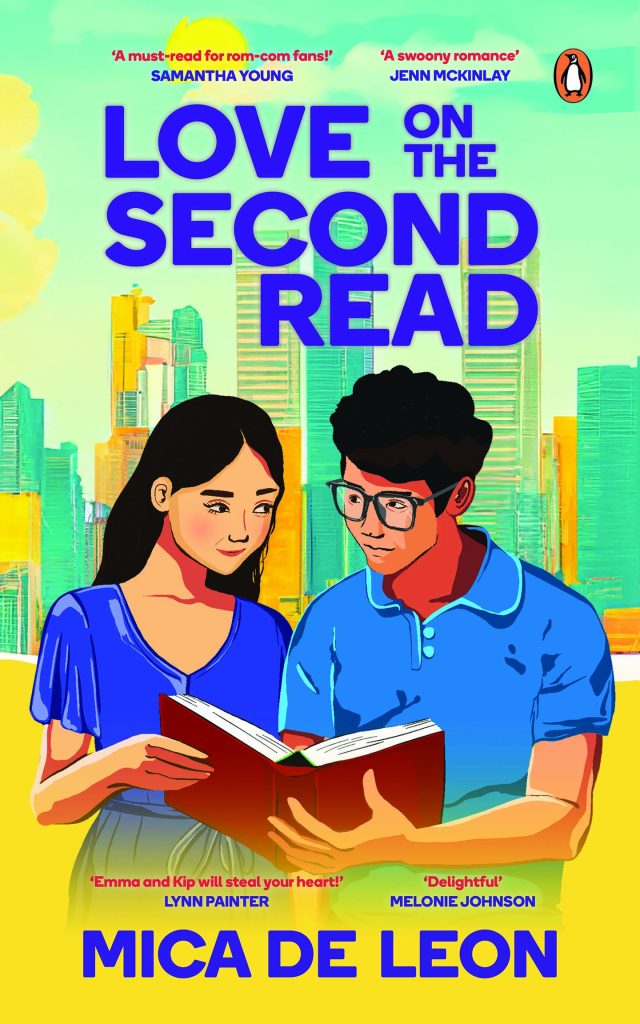MANILA, PHILIPPINES — “Love On The Second Read,” one of Penguin Random House Southeast Asia‘s latest titles, is coming to bookstores this December. An enemies-turned-lovers romance set against the backdrop of the Philippine publishing scene, it is an easy read for those who want a lighthearted story with plenty of literary references and an ode to Taylor Swift. The word on creativity, adobo Magazine, caught up with its author, Mica De Leon, about romance as a genre and how “Love On The Second Read” came to fruition.
Love On The Second Read

Mica described her characters as modern millennials who find it difficult to date. Emma, the main character in her book, is a romance editor who plays a stark contrast against her best friend, January. Emma found herself falling for sci-fi editor Kip and the two set off a romance only to be roiled by past relationships and insecurities.
“I wanted Emma to be this quiet, shy, smart girl na alam yung gusto n’ya but she can be very cruel in her certainty of things.” [I wanted Emma to be this quiet, shy, smart girl who knows what she wants but she can be very cruel in her certainty of things.]
Influenced by the likes of Emily Henry, Ali Hazelwood, and Tessa Bailey, “Love On The Second Read” has all the makings of a romance: the meet-cute, the opposites-attract, and the pining with an added appeal of nerd jokes and likable characters.
Romance as literature
“Romance is literature,” Mica emphasized. For her, it’s a bane that romance is often looked down upon by supposedly more serious writers when a good one can write anything regardless of the genre.
“Don’t hate on a thing they’ve never tried,” she added while urging skeptics to ask their friends for recommendations because for sure, everybody has a love story to tell. It has become a point of frustration for her that, where love is devised as a motivation for other genres, it is looked down upon when it’s the theme itself.
Other literature say that love is an important theme and they’re serious literature. Then romance must be serious literature.
Whether it’s love for a parent, a child, or something else less lofty like for pets, or ambitions, “They’re always protecting something, there’s always a sacrifice for love.”
For those who discriminate against the genre, Mica had this to say: “Other people take it seriously. At least respect the people who like it.”
What’s to like about romance, anyway?

A good draw of romance is its happy ending but more than that, what Mica likes about romance is how it has evolved to be for its own sake: from marriage being a necessity during the Regency era to the time women have entered the labor force until the current time of independent women.
“That’s what I like about romance, it traces the history of how women’s power came to be.”
When asked what makes a good romance, Mica said, “Equality between partners, the respect they have for each other, and their separate lives.” A concept that she has carried to her novel as Kip and Emma are two separate people choosing to be with each other despite their differences.
Apart from this, she also appreciates how far romance has come to include boy-love and girl-love in its range, no longer confining itself to male and female characters.
We see love right now as a pursuit of our personal happiness.
“Romance is not anymore specific to women. Nagiging boy-love s’ya, girl-love, so I like how beautiful yung transformation niya na it’s just about women until it’s just about love and pursuit of happiness.” [Romance is not anymore specific to women. It has become boy-love, girl-love, so I like how beautiful its transformation from it just about women until it’s just about love and pursuit of happiness.]
Love On The Second Read is published under Penguin Random House Southeast Asia. It’s available for pre-order here.










